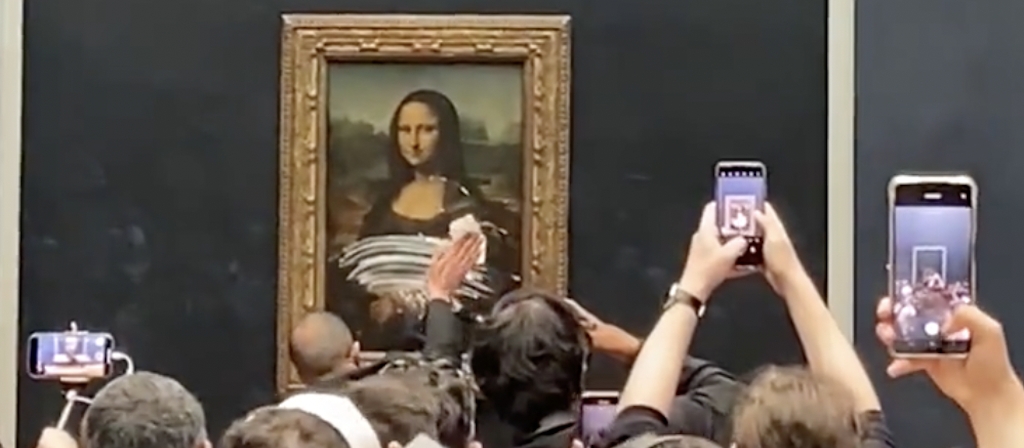The ‘Mona Lisa,’ arguably the most famous work by polymath Leonardo da Vinci, has attracted its fair share of eccentricities. Perhaps you recall the petition to get Jeff Bezos to buy and consume the painting. (Da Vinci himself has inspired action movies.) But on Sunday, it caused something truly unexpected: a cake attack.
As per The New York Times, a man disguised himself as an elderly woman in a wheelchair so he could get close to the Louvre’s most popular attraction. He then proceeded to spring into action, standing up and smearing a cake onto the protective glass that shields it from such assaults.
His motive appears to be environmental. After attempting to smash the glass, he screamed about “people who were destroying the planet,” saying “that’s why I did it.” He was tackled by security, escorted out of the museum, and turned over to the police.
Maybe this is just nuts to me💀but an man dressed as an old lady jumps out of a wheel chair and attempted to smash the bullet proof glass of the Mona Lisa. Then proceeds to smear cake on the glass, and throws roses everywhere all before being tackled by security. 😂??? pic.twitter.com/OFXdx9eWcM
— Lukeee🧃 (@lukeXC2002) May 29, 2022
The protective glass of the Mona Lisa painting at The Louvre was caked today by a man dressed up as an elderly woman in a wheelchair. pic.twitter.com/g8uaQZ1wPp
— Pop Base (@PopBase) May 29, 2022
Images and video surfaced on social media of the defaced glass, which made it look like a big, white smudge had taken up real estate on the bottom half of the painting.
It’s not the first time the Mona Lisa has drawn attackers. In 1956, a man threw a stone at the painting, causing a chip of paint to fall off. (He later said he did it because he was homeless and hoped to be jailed for the winter.) In 2009, a woman threw a teacup, which was shattered upon impact with the protective glass. As for, da Vinci, he can rest easy knowing that a few years ago one of his paintings, a portrait of Jesus Christ, sold for more than any other painting in history.
(Via NYT)

